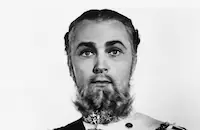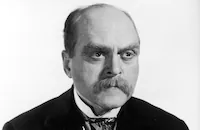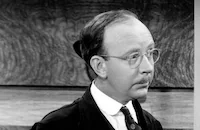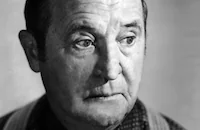Skylark

Brief Synopsis
Cast & Crew
Mark Sandrich
Claudette Colbert
Ray Milland
Brian Aherne
Binnie Barnes
Walter Abel
Film Details
Technical Specs

Synopsis
Lydia Kenyon discovers that her husband Tony, an advertising executive, has sent his friend, George Gorell, to select a fifth wedding anniversary gift for her. Lydia handles the situation with humor, but when Tony, who has no thoughts for anything but his work, "gives" their cook to his client's wife, the snooty Mrs. Myrtle Vantine, Lydia becomes furious and leaves her own cocktail party with Jim Blake, a man she has just met. Although Jim tries to seduce Lydia, she resists his flattery, and they return to the party long after everyone has left. Tony believes his advertising account with Vantine has been jeapordized by Lydia and forces her to call Mrs. Vantine and apologize for deserting the party with Jim, with whom Mrs. Vantine has been having an affair. When Lydia finally leaves Tony, she asks Jim, a lawyer, to handle the divorce, but Tony forestalls her actions by lying to her that he will quit his job so that they can be together. Shortly after, Mrs. Vantine surprises Lydia with a visit and threatens to fire Tony if Lydia does not stop seeing Jim. Lydia, who believes she has nothing to lose, insults Mrs. Vantine by calling her a tramp and a "scheming cow." Lydia later discovers that Tony lied about quitting his job, and some time later, she is granted a Reno divorce. Lydia subsequently spends all her time with Jim, who has genuinely fallen in love with her. Tony refuses to accept the divorce and, having lost his job, takes a government job in South America with the hope that Lydia will reunite with him there. At their summer home, Lydia convinces Tony that they are through, and he departs for South America. The next day, Lydia and Jim go sailing on his yacht, and in the throes of a storm, Lydia realizes that she only wants to be with Tony. She ends her relationship with Jim and reunites with Tony as the ship docks in Havana, Cuba.

Director

Mark Sandrich
Cast

Claudette Colbert

Ray Milland

Brian Aherne

Binnie Barnes

Walter Abel

Grant Mitchell

Mona Barrie

Ernest Cossart

James Rennie

Leonard Mudie

Warren Hymer

Hobart Cavanaugh
Edward Fielding
Leon Belasco

Irving Bacon

Fritz Feld

Armand Kaliz
Patricia Farr
William Newell

Margaret Hayes
Robert Dudley

James Flavin

Howard Mitchell
Edward Peil Sr.

Frank Orth
May Boley
Minerva Urecal
Virginia Sale
Ella Neal
Henry Roquemore
Francisco Maran
Keith Richards
"butch"
Crew
Roland Anderson
Hans Dreier
Mel Epstein
Irene
Charles Lang Jr.
Harry Lindgren
Z. Myers
Richard Olson
Loren Ryder
Mark Sandrich
Mark Sandrich
Allan Scott
Leroy Stone
Rudd Weatherwax
Victor Young

Videos
Movie Clip


Film Details
Technical Specs

Award Nominations
Best Sound
Articles
Skylark
Both Colbert and Milland had long been under contract to Paramount; by 1941 she had been a star for almost a decade and he was finally coming into his own. When Colbert was asked to star in Skylark, she demanded that the studio assign Milland to play her husband or she wouldn't do the film. Although Louella Parsons announced in her famous gossip column on December 7, 1940, that George Brent would be loaned by Warner Bros to Paramount to co-star with Colbert and Milland, it was Brian Aherne who would get the role of Jim Blake. Also in the cast were Binnie Barnes, Walter Abel and Grant Mitchell.
According to The Miami News Colbert was tossed around so badly during the filming of the sea storm sequence that she had twenty-seven bruises on her body. Edith Head, a favorite designer of Colbert's, created her wardrobe. Head made eighteen different changes of gowns, suits, lingerie and sports clothes, which was indicative of Colbert's star status. Colbert was so taken with the clothes that she purchased some of them for her personal use. Among the accessories that Colbert wore were diamond clips and bracelets by the DeBeers company, which had begun to incorporate product placement of their jewelry into Hollywood films in the 1930s.
Skylark was a certifiable hit when it debuted in New York the day before Thanksgiving on November 19, 1941. Bosley Crowther, the notoriously snarky New York Times critic, called it "a saucy and flavorsome little delicacy [...] Cut yourself a slice of it, if your taste is for frivolous fun. For this elegant bit of nonsense, which was dished up by the Paramount chefs, is just a few pounds of husband-wife comedy, seasoned with chucklesome wit, garnished with fine-feathered acting and done to a fly-away turn. In the line of fancy tit-bits, Skylark is a cinema caterer's dream."
SOURCES:
"Claudette Takes It" The Miami News 13 Dec 41
"Colbert Stars in 'Skylark'" Eugene Register-Guard 4 Apr 42
Crowther, Bosley "Skylark,' Lively Comedy Which Takes Off From Triangle, at the Paramount" The New York Times 20 Nov 41
Goble, Alan The Complex Index to Literary Sources in Film
"In Demand - and How!" The Milwaukee Journal 25 Jul 43
The Internet Movie Database
"Mission Theater Shows Comedy Hit" San Jose News 30 Dec 41
Otnes, Cele, Pleck, Elizabeth Hafkin Cinderella Dreams; The Allure of the Lavish Wedding
Parsons, Louella "George Brent is Pages for Skylark Role" The Milwaukee Sentinel 7 Dec 40
Segrave, Kerry Product Placement in Hollywood Films: A History
"Skylark" The Glasgow Herald 23 Dec 41
By Lorraine LoBianco

Skylark
Quotes
Trivia
Notes
Raphaelson's novel first appeared in Saturday Evening Post under the title Streamlined Heart (7 January-4 February 1939). Gertrude Lawrence played the female lead in the play. A news item in New York Times noted that the filmmakers altered the play for its screen adaptation, including "the part about the adopted baby that was sent back to the orphanage...because the fans might not approve of Miss Colbert treating an infant so heartlessly." Actor Hobart Cavanaugh's name was misspelled in the onscreen credits as "Cavanagh." Hollywood Reporter production charts list Ray Storm as film editor; however, this is most likely a typographical error for LeRoy Stone. Hollywood Reporter news items note that Melvyn Douglas was originally cast in the part of "Tony Kenyon." Loren Ryder, chief sound engineer at Paramount studios, was nominated for an Academy Award for this film; however, he did not receive credit for his work on the film. Claudette Colbert, Ray Milland and Brian Aherne reprised their roles in a Lux Radio Theatre broadcast on February 2, 1942.














